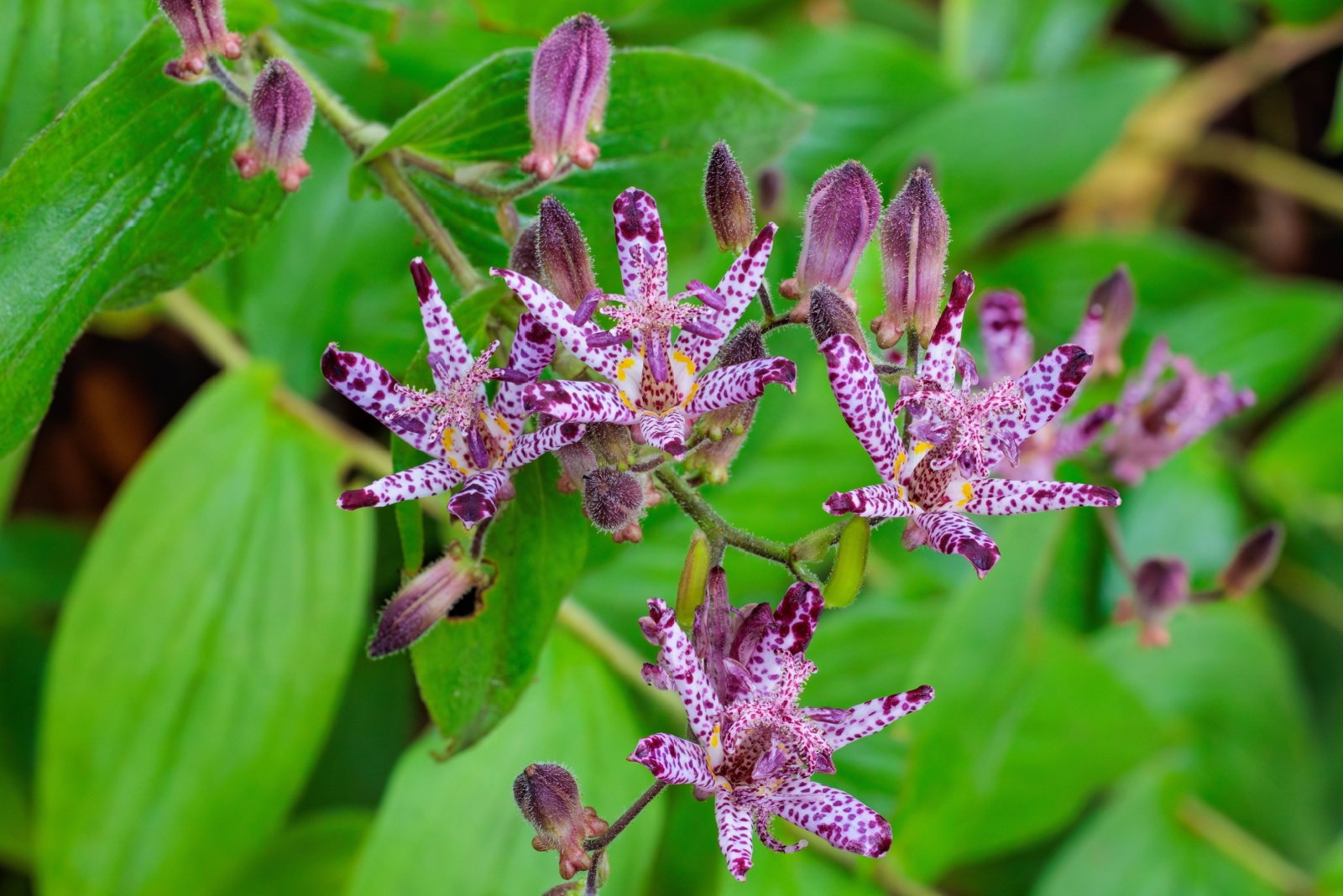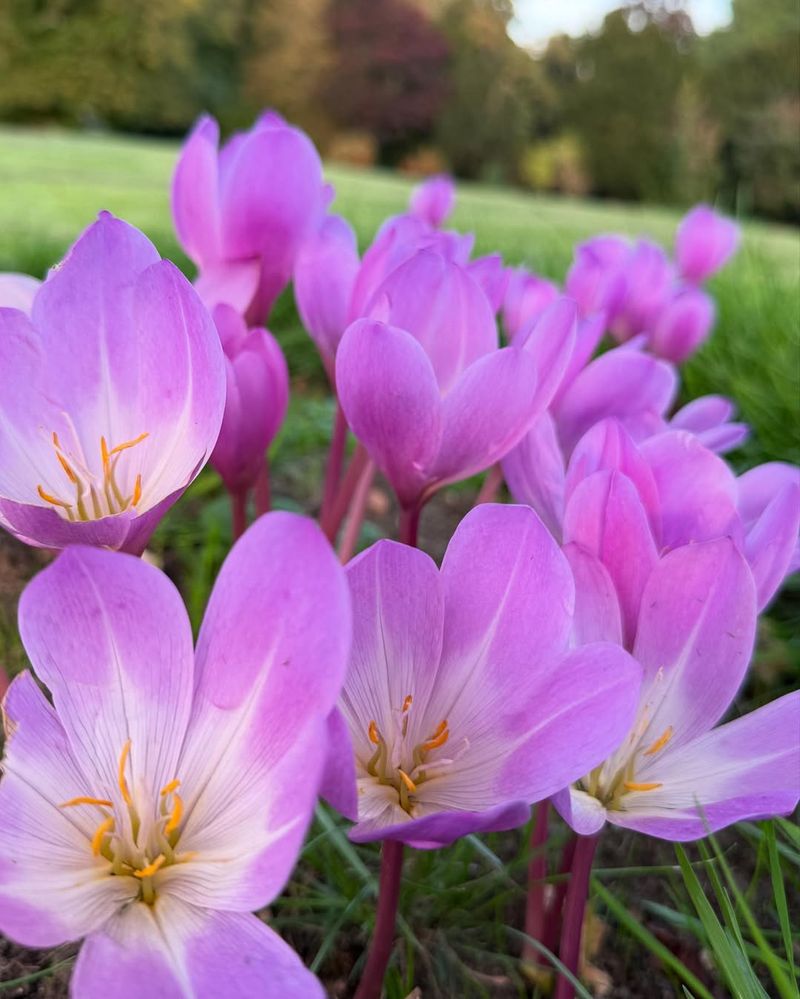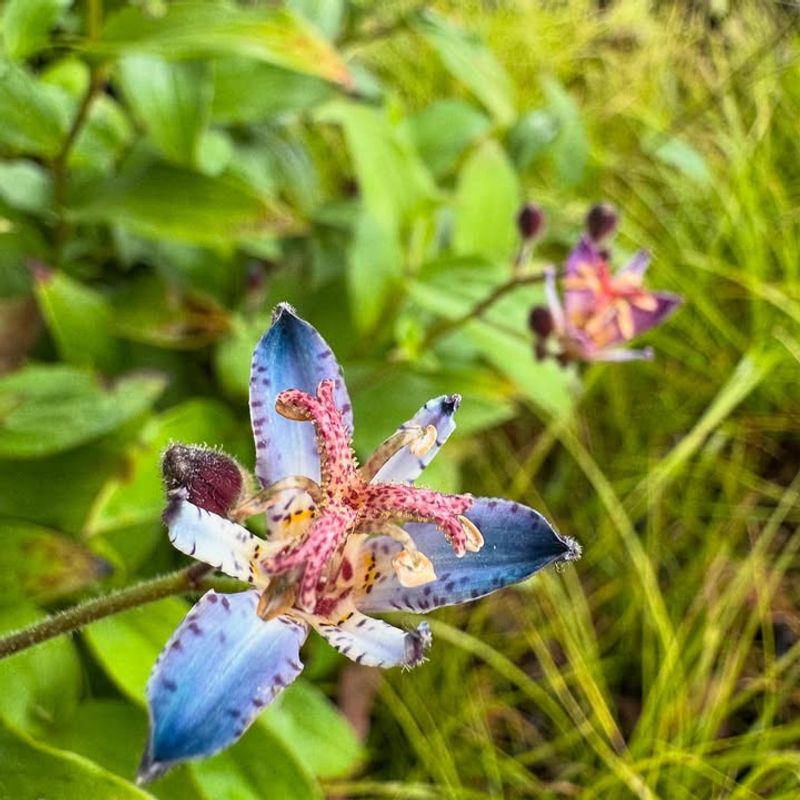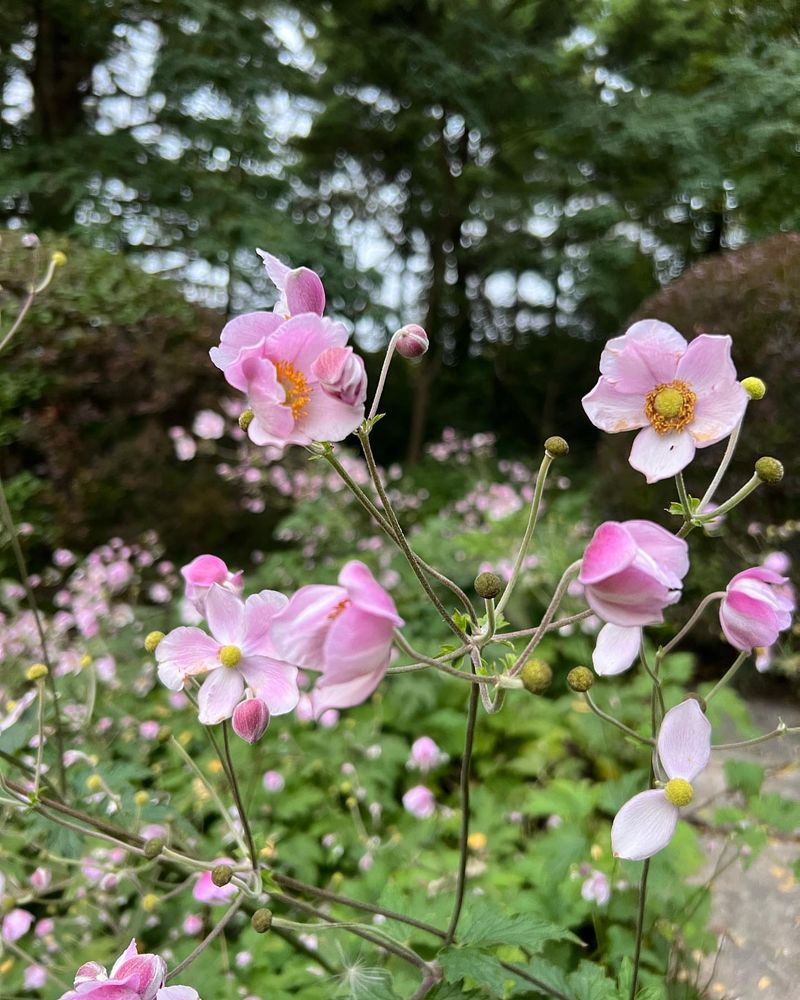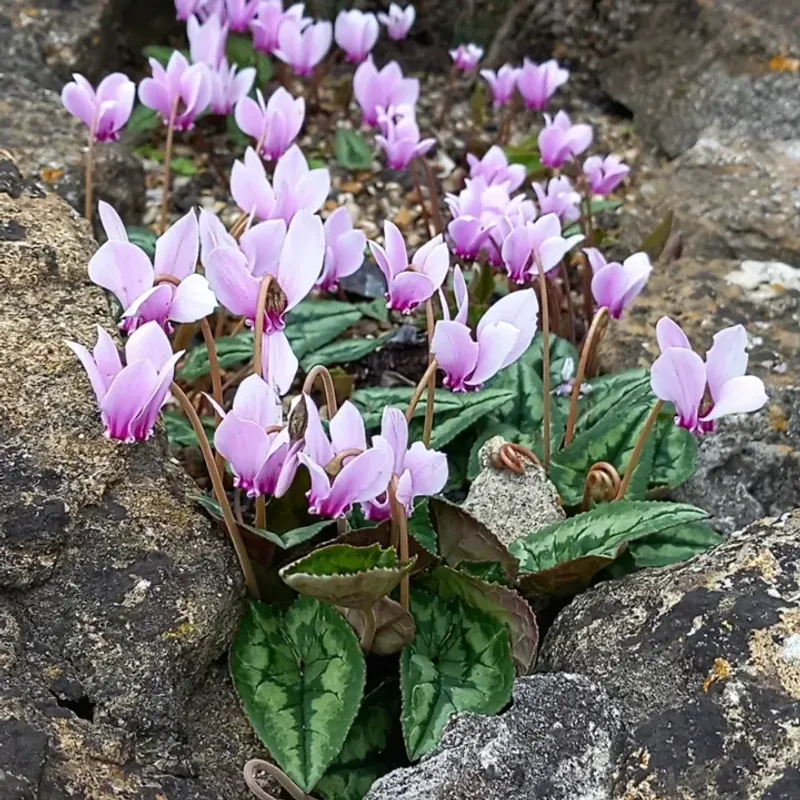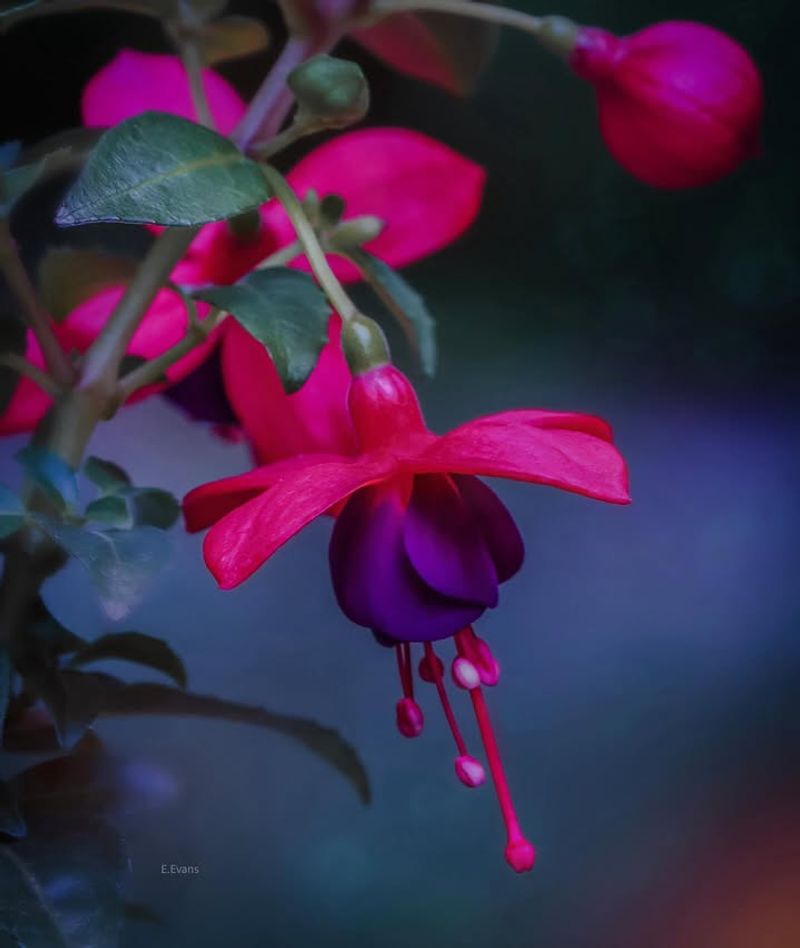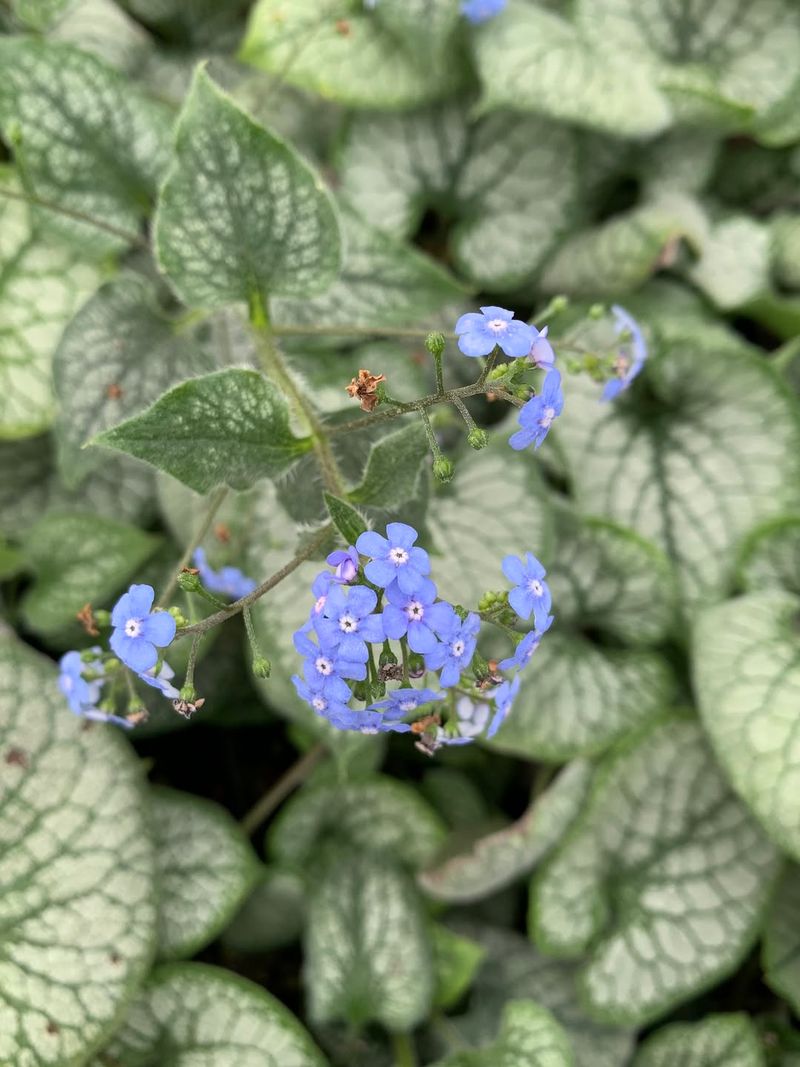Late fall in Pennsylvania brings shorter days and a lower sun, casting deeper shade across the garden. Those already-dim corners can feel even darker this time of year. Finding flowers that thrive in cool temps and low light isn’t always easy—but it’s far from impossible.
Some late-season blooms are made for these quiet, shadowy spots. I’ve seen gardens come alive with color even after most plants have called it quits. With the right choices, you can brighten up those shady areas well into the season.
1. Autumn Crocus
Popping up when you least expect them, these lavender-pink beauties surprise gardeners with their cheerful blooms right when the weather turns chilly. Unlike spring crocuses, they appear without leaves, creating magical carpets of color under trees and shrubs.
Plant the bulbs in late summer for a spectacular fall display. They multiply quickly and return year after year, making them a smart investment for shady Pennsylvania gardens that need a boost of brightness during gloomy autumn days.
2. Toad Lily
With spots and stripes that look almost painted on, toad lilies bring an exotic touch to Pennsylvania shade gardens. These fascinating flowers bloom on arching stems throughout October and November, offering something truly different from ordinary garden plants.
Native to Asian woodlands, they adapt wonderfully to our climate and actually prefer the cooler temperatures of fall. Their orchid-like blooms attract late-season pollinators while adding texture and interest to areas where other plants have already faded away completely.
3. Japanese Anemone
Graceful stems sway in autumn breezes, carrying delicate blooms that seem to float above dark green foliage like butterflies. Japanese anemones start flowering in late summer and keep going strong through October, providing reliable color when Pennsylvania gardens need it most.
These dependable perennials spread slowly to form attractive colonies under trees where grass struggles to grow. Their papery petals come in shades of pink, white, and rose, creating a soft romantic feeling in woodland settings throughout the entire fall season.
4. Hellebore
Tough as nails yet surprisingly elegant, hellebores laugh at cold weather and keep their glossy leaves looking fresh all winter long. Some varieties start blooming in late fall, offering nodding flowers in cream, pink, purple, and green shades that last for months.
Deer won’t touch them, and once established, they handle dry shade better than almost any other flowering plant. Pennsylvania gardeners treasure these workhorses for filling problem spots under evergreens and along north-facing foundations where nothing else seems willing to perform.
5. Cyclamen
Heart-shaped leaves decorated with silver patterns make cyclamen special even before the flowers appear. When those swept-back blooms finally emerge in shades of pink, white, or magenta, they look like tiny butterflies hovering just above the ground.
Hardy cyclamen varieties handle Pennsylvania winters without complaint, blooming from September through November in shady spots. They naturalize under deciduous trees, creating enchanting drifts that expand slowly over the years. Their small size makes them perfect for tucking into tight spaces near walkways and foundations.
6. Begonia Grandis
Most gardeners think begonias are annuals, but this hardy version comes back reliably each spring and blooms until frost arrives. Clusters of soft pink flowers dangle from red stems above wing-shaped leaves with burgundy undersides, creating a tropical look in Pennsylvania shade gardens.
September and October bring the heaviest flowering, just when color becomes scarce. They self-sow gently, producing baby plants that fill in gaps without becoming weedy. Begonia grandis tolerates deeper shade than most bloomers, making it valuable for challenging spots.
7. Fuchsia
Dangling like tiny lanterns, fuchsia flowers bring a whimsical touch to shaded areas with their two-tone color combinations. Hardy varieties survive Pennsylvania winters when mulched properly, returning each spring to bloom from summer straight through the first hard freeze.
Hummingbirds adore these nectar-rich flowers and visit them constantly during fall migration. The plants prefer cool temperatures, actually performing better in autumn than during hot summer months. Their unique shape and vibrant colors make them conversation starters in any shaded border or container arrangement.
8. Colchicum
Nicknamed meadow saffron, these goblet-shaped blooms emerge straight from the soil without any leaves, creating an almost magical appearance in late September and October. Their large lavender-pink flowers look similar to crocuses but stand much taller and bolder.
Plant colchicum bulbs in areas where their spring foliage won’t bother you, since large leaves appear months after flowering finishes. They naturalize beautifully under deciduous trees in Pennsylvania, multiplying steadily to form impressive displays. Each bulb produces multiple blooms, giving you excellent value for years to come.
9. Persicaria
Persicaria, with its striking red spikes, stands as a testament to nature’s resilience. These flowers flourish in shaded areas, offering vibrant color when most plants have retreated for the season. Often overlooked, Persicaria adds a splash of excitement to the garden.
Its ability to thrive in less sunlight makes it ideal for Pennsylvania’s wooded spaces. Did you know? Persicaria is also known as Knotweed due to its unique stem structure. Its adaptive nature makes it a favorite among gardeners seeking low-maintenance beauty.
10. Brunnera
Brunnera, affectionately known as False Forget-Me-Not, captivates with its delicate blue blossoms. These flowers bring a gentle charm to shaded gardens. Their heart-shaped leaves offer a unique texture that complements the soft blooms.
Ideal for late fall, Brunnera retains its beauty while other plants yield to colder temperatures. Fun fact: Brunnera’s name is derived from Swiss botanist Samuel Brunner. Its enduring presence and easy care make it a beloved choice for gardeners looking to add year-round interest to their landscapes.

